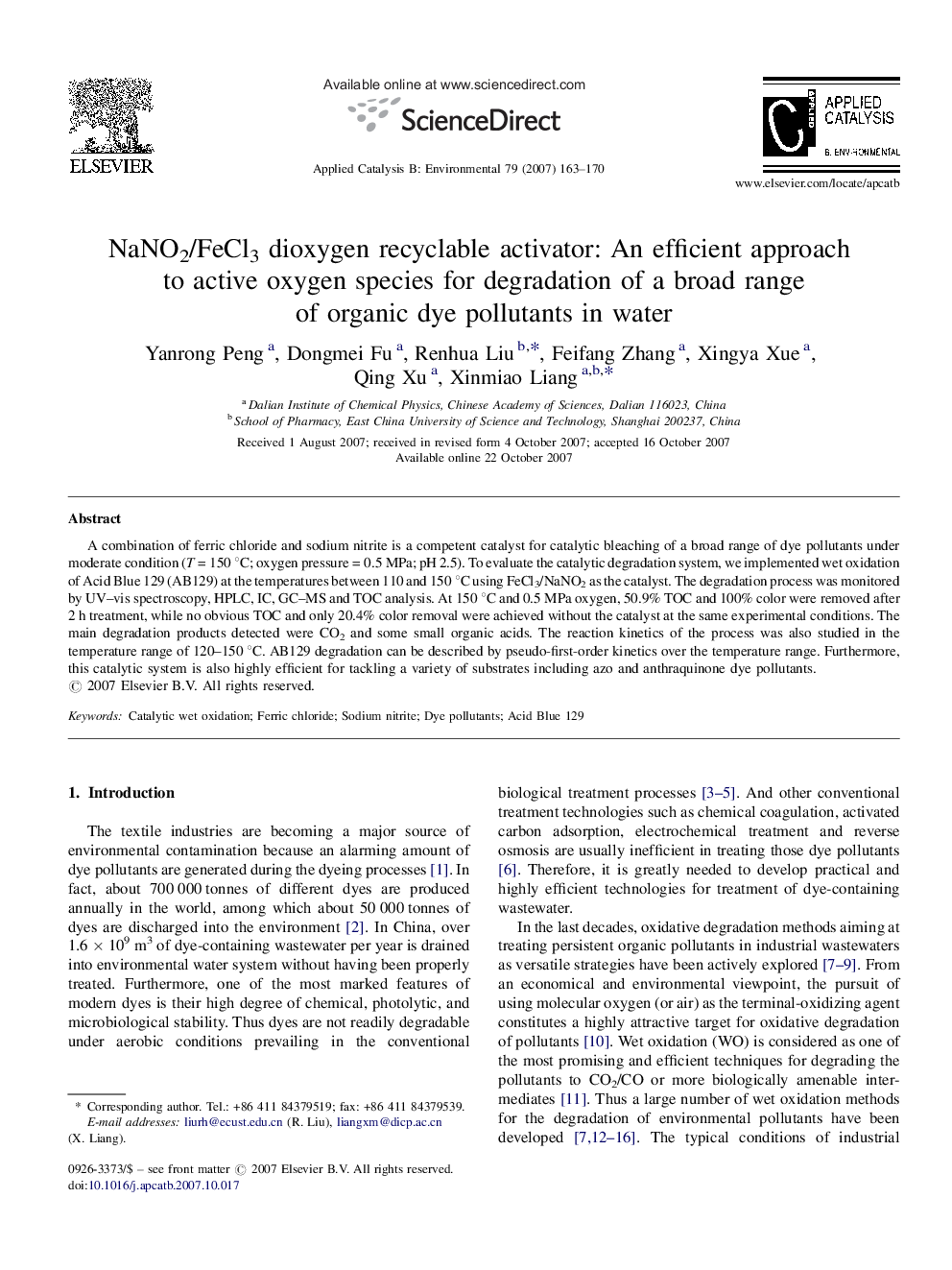| Article ID | Journal | Published Year | Pages | File Type |
|---|---|---|---|---|
| 48464 | Applied Catalysis B: Environmental | 2008 | 8 Pages |
A combination of ferric chloride and sodium nitrite is a competent catalyst for catalytic bleaching of a broad range of dye pollutants under moderate condition (T = 150 °C; oxygen pressure = 0.5 MPa; pH 2.5). To evaluate the catalytic degradation system, we implemented wet oxidation of Acid Blue 129 (AB129) at the temperatures between 110 and 150 °C using FeCl3/NaNO2 as the catalyst. The degradation process was monitored by UV–vis spectroscopy, HPLC, IC, GC–MS and TOC analysis. At 150 °C and 0.5 MPa oxygen, 50.9% TOC and 100% color were removed after 2 h treatment, while no obvious TOC and only 20.4% color removal were achieved without the catalyst at the same experimental conditions. The main degradation products detected were CO2 and some small organic acids. The reaction kinetics of the process was also studied in the temperature range of 120–150 °C. AB129 degradation can be described by pseudo-first-order kinetics over the temperature range. Furthermore, this catalytic system is also highly efficient for tackling a variety of substrates including azo and anthraquinone dye pollutants.
